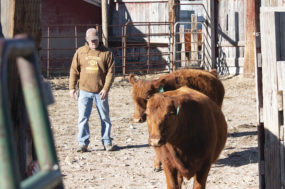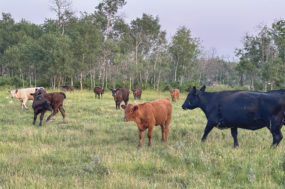As some areas begin to see more moisture, pasture maintenance becomes more important to the business model.
“Dry weather impacts both range and introduced plants. We are still in a drought here in south Texas, but other areas have started to recover,” says Dr. Jamie Foster, Texas A&M AgriLife research forage agronomist.
“We were constantly adjusting stocking rates last summer. The dry weather did hurt some of our pastures, particularly the fescue stand. It’s really patchy in areas,” says Eldon Cole, extension beef specialist, University of Missouri.
As ground comes out of dry weather and starts getting some moisture, soil fertility comes into question. The nutrient availability will not only have an effect on how much grazing is available but is really important for the health of the plant.
“We apply nitrogen to improved pastures to maximize production, but phosphorus and potassium are really important for the health of the plant,” Foster says. “Realistically, it could take a couple growing seasons to get your grass back in shape. Always soil test before you apply any type of fertilizer.”
Taking care of the pastures is the first step to recovery. Managing the grass and grazing will help this process.
“In our area, the cattlemen were smart – they didn’t grub the grass down to the ground where they compromised the stand,” Cole says. “After a few rains and proper soil fertility, we can grow a lot of stuff.
The price of fertilizer, even what was once low-cost poultry litter, is not cheap; you have to put a pencil to it to make sure it works.”
“During the grazing season, grass is already stressed from grazing, and dry weather hurts that plant’s ability to persist. It’s always important to leave good stubble because this helps allow rainfall to infiltrate the soil and not run off,” Foster says.
“During dry weather, the plants struggle to persist and the root system, which we can’t see, uses reserves in an effort to persist.”
Opportunistic weeds or undesirable species are often the first to come along after dry weather, infiltrating fields and creating problems if some form of weed control is not implemented at the proper time.
“Weed control is very important, but it’s tricky. You don’t want to waste money spraying when that weed is inactive, and sometimes it takes two applications,” Foster says.
“Know what weeds you have and the proper time to spray. You must walk pastures to see which weeds are actively growing and find the right herbicide to get rid of them.”
“Our fields were run over with weeds. Serious things like musk thistle and poison hemlock that can cause long-term problems were coming into area pastures,” Cole says.
“Many ranchers sprayed the pastures because these broadleaf weeds had encroached during dry weather. The more of them I talk to say herbicide was more important than fertilizer this spring, and if they had to choose, they bought weed spray.”
Management-intense or rotational grazing also impacts the ability to grow grass during dry weather. This type of grazing system is well documented, and operations that utilize this system could be one step ahead when it comes to recovery.
“With some weed control and rotational grazing, we’re seeing stocking rates return to really acceptable levels. Overseeding ryegrass or other winter annuals, even non-traditional things like turnips, helped keep our liquidation slower than some other areas,” Cole says.
“Pastures that had built a good stand of legumes will take a little longer to recover because most have applied some type of herbicide, and that kills legumes. The overseeding actually helped forage quality because those grasses don’t have the endophyte toxin.”
“Rotational grazing helps us manage pastures a lot better during dry weather. We can stockpile forage for later grazing and let the cow harvest it,” Foster says.
“Rest periods built into the rotations are very beneficial to plants stressed from grazing. A rotational grazing system also allows the manager the option of a sacrifice pasture, meaning you could put all the cows in one pasture and feed hay, holding the damage to a smaller area.”
Some operations are facing the problem of having too much forage. Replacement costs and low profit margins may handcuff cattlemen when it comes to deciding how to take advantage of extra production. Utilizing different classes of cattle may be the answer.
“As those pastures start to recover after the drought, some operations could have excess forage. Stocker cattle could be a good way to utilize that forage and keep pastures improving,” Foster says. “Stockers are only there a short amount of time. Cows are a long-term commitment with higher nutrient requirements and intake.”
Pasture recovery is no joke. Most cattlemen take the grass-farming end of the bargain pretty seriously. When Mother Nature does not respond with proper rainfall, it limits the resources to do that part of the job.
Several regions of the country that experienced an extremely dry summer last year are getting some moisture and on the road to recovery. Maintaining plant health and allowing pastures a little rest will go a long way.
“We can recover pretty quickly from a drought. Our country is not like some of the Western states where it takes a long time to recover from a summer like we just had,” Cole says. “We can maintain good stocking rates as long as we see some weed control and timely fertilizer applications.”
“Forage production and quality depends on rainfall. Most of our warm-season grasses are designed to produce and then decline in quality and tonnage over a grazing season,” Foster says.
“Resting those pastures is really important even in normal years, but it becomes more important in dry weather and we have to constantly adjust stocking rates to maintain pastures.” ![]()
Clifford Mitchell is a freelance author based in Oklahoma.







